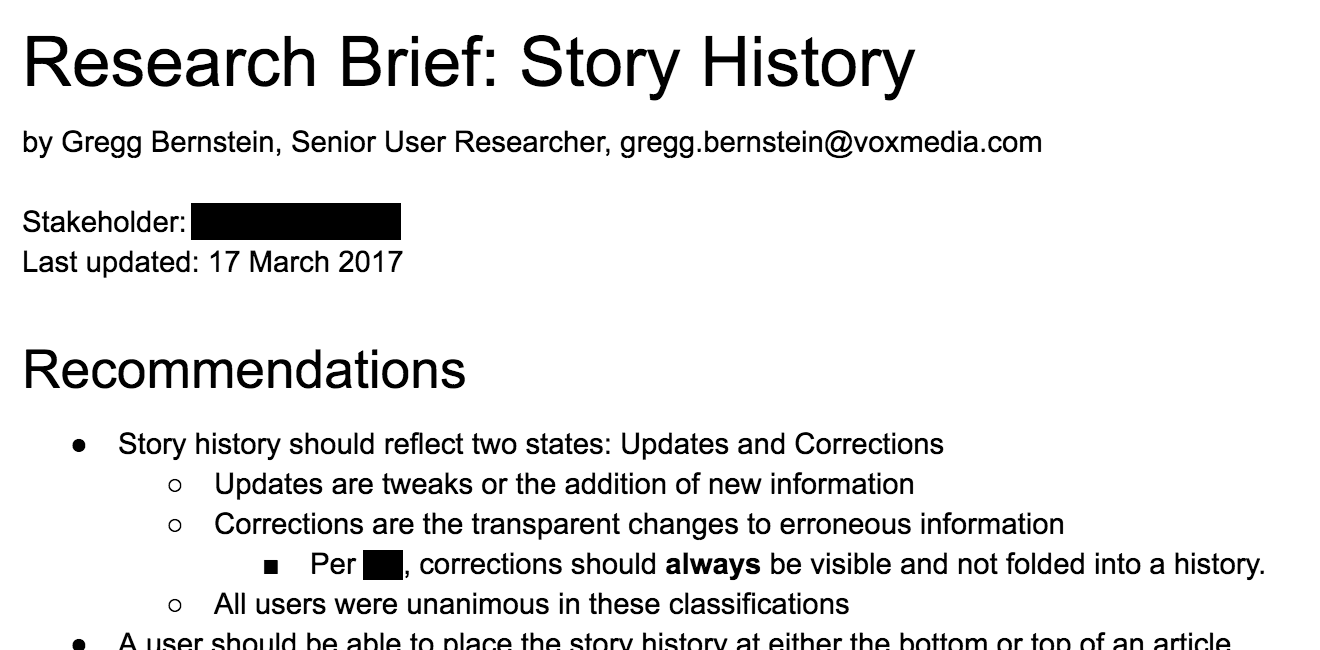On the Vox Product blog, I wrote about how I create an ambient awareness of user and product research across my product team by sharing everything, everywhere—repeatedly and redundantly.
Most of my sharing takes place over Slack and in Google Docs, and a few people asked me to share my research doc templates.
Slack
When I share notes from a single interview or usability test in Slack, I keep things simple with a bolded headline and a handful of bullet points:
 An example of how I share quick takeaways in Slack.
An example of how I share quick takeaways in Slack.
I want my colleagues to be aware of what I just learned, and who I learned it from. I try to anonymize participants in Slack by only referring to their role, not their name. Because I work with many internal users, I want to avoid bringing undue attention on any one person. (I also want to avoid interrupting their work by inadvertently summoning them to the Slack channel!)
Google Doc
When it comes to collecting findings into a more permanent document, I use this Google Doc template as a starting point.
I keep reports as brief as possible, and open the doc with recommendations and issues. That’s what people want to see, so why make them work to find it? Placing the recommendations at the top also makes it possible to review the findings by previewing (rather than opening) the file in Google Drive.
 An example of how I structure takeaways in Google Docs.
An example of how I structure takeaways in Google Docs.
I then explain how I tested (remotely or IRL; with a prototype or something that’s been released) and recap each individual test or interview (almost verbatim from what I shared in Slack, perhaps with a few more details).
Then I use a Metadata section to share the project genesis, goals, methodology, participants, script, schedule, and recruiting pitches. The metadata is meant to allow anyone to follow my steps, validate my work, or repeat the research process.
This metadata section will look familiar to anyone who’s seen Tomer Sharon’s wonderful UX Research Plan That Stakeholders Love—I folded in a modified version of Tomer’s plan so this doc can serve as a proposal, a plan, or an archive depending on the stage of a project.
Alignment
I listed Slack and Google Docs as the media of choice for my organization. The important thing to note is that the medium you use is entirely dependent on your organization’s habits. If your org runs on Basecamp, or a combination of HipChat + Confluence, go that route.
Similarly, you’ll want to dismantle these templates and reassemble them to serve and inform your particular colleagues.
@ Me
I love to see how different organizations capture and share information. If you have templates or recommendations you want to share, tweet at or email me!
